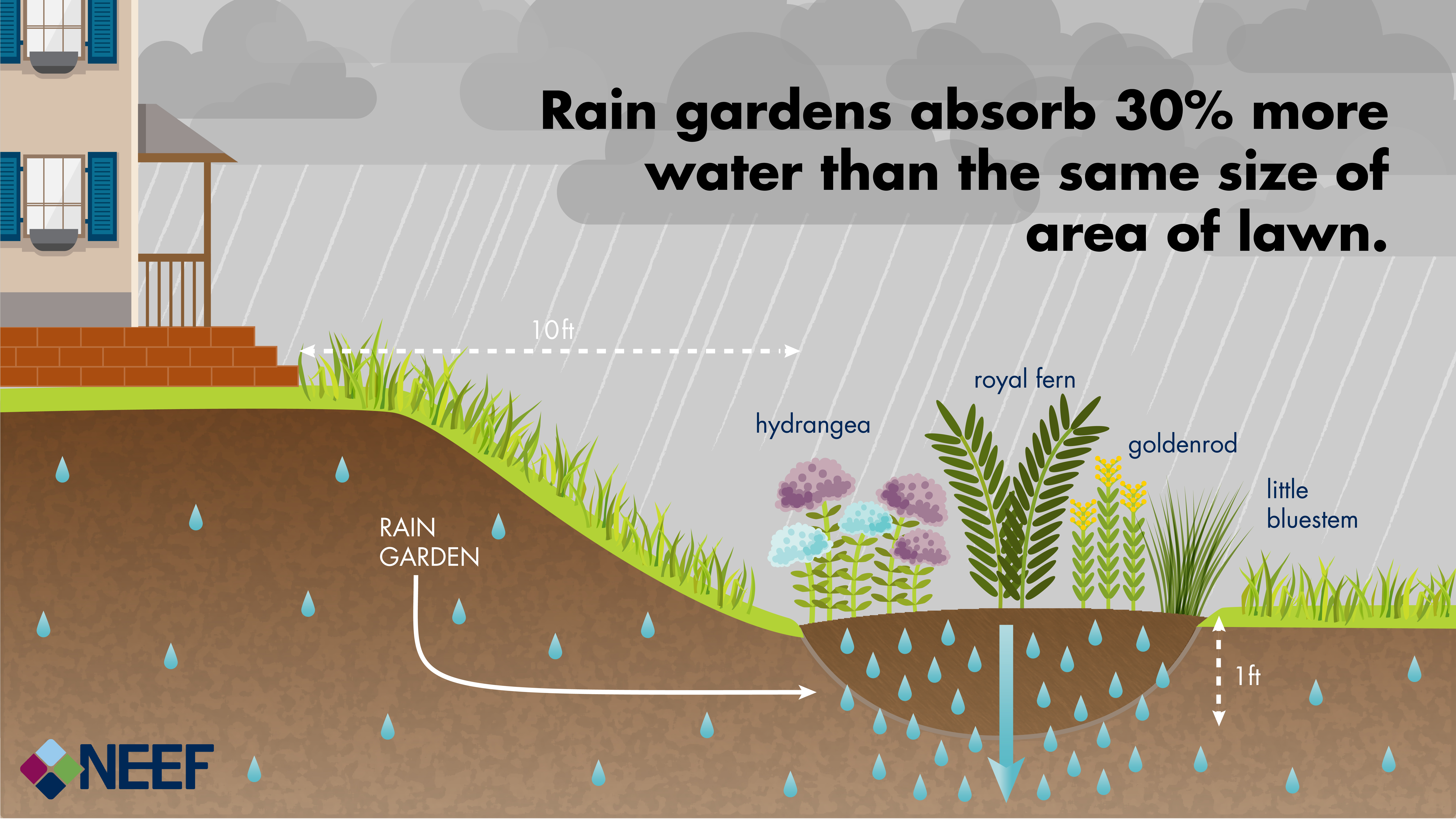Story
Not Just Another Pretty Flower: The Basics of Rain Gardens

Rain gardens are a visually pleasing way to absorb and filter pollutants from rainwater before the water runs off into storm drains and local water bodies. Rain gardens can be built in public spaces, such as a recreational park, or on private, residential properties.
There are several common features of a rain garden: a depression, native plants, soil and drainage.
- The depression is usually shallow â up to a foot in depth â and acts as the base structure to capture rain water.
- Rain gardens are planted with a variety of water-tolerant native plants that are well adapted to local weather and soil conditions. Plants with deep root systems help to absorb rain water.
- The soil in a rain garden needs to absorb and slowly release water into the ground below. Often, mulch atop a soil mix of sand, compost and topsoil allows for good absorption and filtering.
- Rain gardens should capture rainwater and allow it to slowly percolate into the ground below. Good drainage helps avoid flooding in areas surrounding the rain garden.
Image

Sources:
Blue Thumb “Why have a blue thumb?” http://www.bluethumb.org/
EPA “Bioretention (Rain Gardens) http://water.epa.gov/polwaste/npdes/swbmp/Bioretention-Rain-Gardens.cfm
Minnesota Pollution Control Agency ”Bioretention” http://stormwater.pca.state.mn.us/index.php/Bioretention
Rain Garden Network “All About Rain Gardens” http://www.raingardennetwork.com/about.htm
Topics


